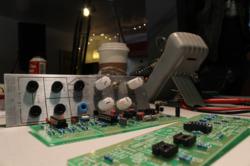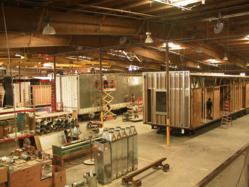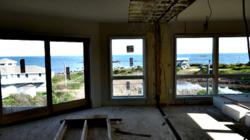
San Francisco, CA (PRWEB) June 15, 2012
ROBOTSPEAK, the premier San Francisco music production school for electronic music, is beginning build sessions that concentrate on the construction of a historically accurate modular synthesizer from the early 1970s. This month’s module is the classic 1973 Serge Multimode Filter, a powerful and very flexible synthesizer module originally created by Serge Alexandrovich Tcherepnin during the 1970s.
As the summer progresses, we’ll be focusing on these elegant and unique Serge designs, both from the standpoint of circuitry and user interface, Steve Taormina of ROBOTSPEAK said. Upcoming builds will focus on several other unique Serge modules that together comprise a compact modular system. By fall 2012, we anticipate having several of these ‘replica’ CGS Serge Modular Systems nearing completion and being used in our modular analog synthesis theory classes that occur every few months.
The 1973 Serge Multimode Filter, which is the focus during June, has a very bright, somewhat acoustic sound quality. It features a range switch that kicks it into subharmonic mode for filtering low-frequency oscillations (LFOs), controlling voltages, etc.
Although the circuit can be built into most modular formats or a stand-alone box, the music production school has chosen to honor its heritage with a limited run of Serge-style face panels done with 1973-inspired panel graphics and banana-jack patching.
ROBOTSPEAK’s modular synth build sessions are conducted with a guest lecturer and utilize open class formats that encourage participants to work socially and co-operatively.
Joining a ROBOTSPEAK modular build session will not only provide you with a useful self-built tool to enhance your music making but will also allow you to become aware of the experience of creative and enjoyable problem-solving completed within a team, Taormina said. Each session will be overseen and advised by a different synth designer/builder, who will offer their expertise and time to bring back the communal modular synth building mind set from the past.
The workshops cost around $ 175 per session and the PCB and most of the supplies are included to build one module. Depending on what the workshop is building, the cost of materials and details may change. Be sure to check the blog for current information at http://www.coa-modular.com/workshops/.
We will build one every month, Taormina said. This is more than a product-based workshop. We want to build a monthly group where we can hang out and solder, and learn and share do it yourself (SDIY). Whatever system you have, we can help get your module regulated and paneled up. If you want to start a system, we can help get a case and power supply unit (psu) sorted.
Participants will be able to take their module home.
For the most current information about the workshops, visit ROBOTSPEAKs Facebook page.
To reserve a spot or for more information about any of ROBOTSPEAKs products or services, call 415-230-0840, or view the music production specialist on the Web at http://www.robotspeak.com or on Facebook. ROBOTSPEAK is located at 589 1/2 Haight St. in San Francisco and is open on Wednesdays, Thursdays and Saturdays from noon to 6 p.m., and Fridays from 11 a.m. to 7 p.m. ROBOTSPEAK is also available by appointment.
About ROBOTSPEAK
ROBOTSPEAK is a school located in San Francisco that specializes in teaching basic to advance electronic music and DJ classes, such as handling different DJ equipment to learning music production. Its classes are designed to empower the home and project-studio musician with real-world skills, enabling them to make better music now with gear and musical instruments they actually own.


